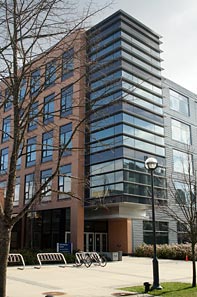Research Summary
Our lab studies how transcription is maintained and altered over time using the model system of mouse embryonic stem cells. Our research combines cutting-edge technologies including CRISPR/Cas9-mediated gene editing, genomics, and single molecule live-cell imaging to explore the mechanisms of transcriptional memory.
Our long term goal is to understand the mechanisms governing transcriptional memory over multiple time scales. By focusing on the underlying mechanisms, we hope to generate models for how cells maintain self-identity over time, how cells change their identity over time, and how the next generation of the organism is borne from the old. These important questions touch on the cornerstone of multi-cellularity and propagation.
Current Research Projects:
“A dynamic mode of mitotic bookmarking by transcription factors”
Each cell type in an organism has a specific function that is tied to its identity. Cell identity is determined primarily by the specific set of genes that are active in that cell type while silencing the rest. More importantly, the cell type specific gene program must be maintained throughout the lifetime of the organism.
This type of ‘transcriptional memory’ is potentially compromised every time a cell divides. When cells divide to form new cells, the DNA is condensed and gene activity is mostly turned off. However, each dividing cell also has to ‘remember’ the program of genes that specifies its identity. After division, how do the new daughter cells ‘know’ which genes to turn on and which ones to keep off?
One way that cells can regulate their genes is by using cell type specific transcription factors that can bind and regulate cell type specific target genes. Previous studies over the last 2 decades have shown that the transcription factors bound to DNA were all detached and become excluded from mitotic chromosomes during cell division, presenting a potential challenge to re-establishing the original gene program. Through studies in mouse embryonic stem cells that combined gene editing, genomics, and single molecule live cell imaging, we have shown that this finding is largely an artifact of the methods used to study the process. Movie 1 shows that the transcription factor Sox2 starts as highly enriched on mitotic chromosomes, but upon the addition of formaldehyde for fixation, most Sox2 molecules detach from DNA. In fact, many transcription factors still bind to and interact with DNA during cell division. This provides an efficient way for the newly formed cells to quickly reset to the pattern of gene activity appropriate for their cell type.


